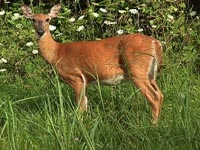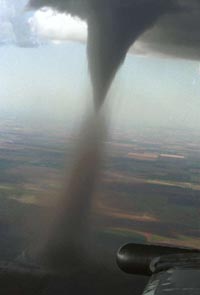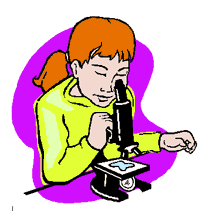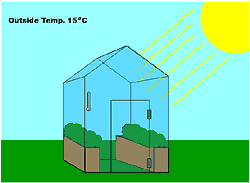Is the Earth's Climate Changing Because of Human Activities?
You may have overheard adults talking about how the weather seems so strange. For example, meteorologists, scientists who study the weather, say that Alberta's weather for January 2001, is the warmest on record. On the east coast of Canada they suffered through the largest snow fall on record. In other areas in the world they are suffering droughts, floods and even larger than normal hurricanes. Most meteorologists agree the world is getting warmer but they can't agree what is causing it. We just don't have enough data (information).
The Greenhouse Effect
Have you ever got into a car that has been sitting out in the sun with the windows closed? If you have, you would have noticed that it was much warmer than the outside temperature. This warming is caused by a natural action called the greenhouse effect.
Take a few minutes now to watch the animated explanation of the greenhouse effect and then read the article on the greenhouse effect.
Click THIS to watch the video.
Click THIS to view the article.
The Atmosphere of the Earth can act the same way as the glass in a greenhouse. In fact, if the Earth had no greenhouse effect, the Earth would be so cold that life as we know it could not exist. So the greenhouse effect is good! Wait a minute - We just learned that the greenhouse effect is bad! Whose right?
They're both right! Small amounts of greenhouse gases have kept the Earth warm enough for life to flourish. But as we put more of these greenhouse gases into the atmosphere more and more heat is being trapped.
To learn more about Global Warming and Global Climate Change click on this website and then go on to the activity and answer in the exercise below.
Conclusion
All these activities cost a great deal of money. But if we don't do the research, we will never be able to really understand how our Earthly home works.
As you can see, we still have much to learn about the world around us. Meanwhile, we are still dramatically changing these ecosystems faster than we can study them. For most ecosystems, we don't even understand what sustainability means. To be on the safe side, we need to put less stress and wear and tear on these systems. How do we do that? What's what the next lesson is all about.
|






































